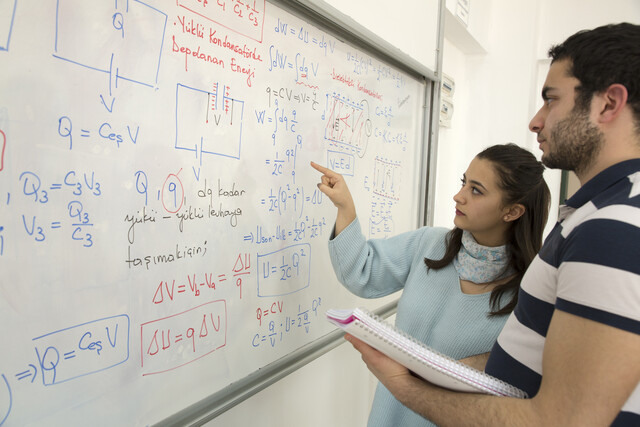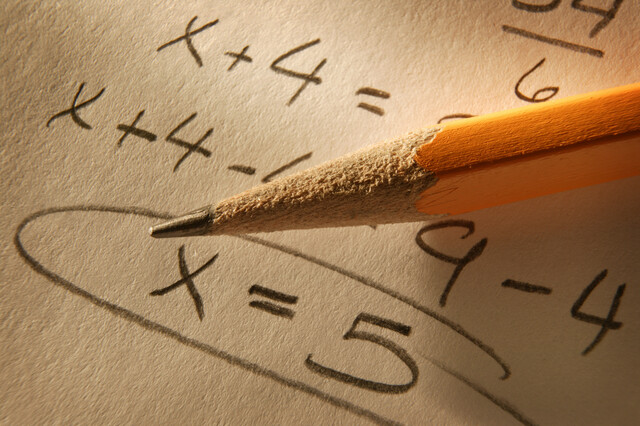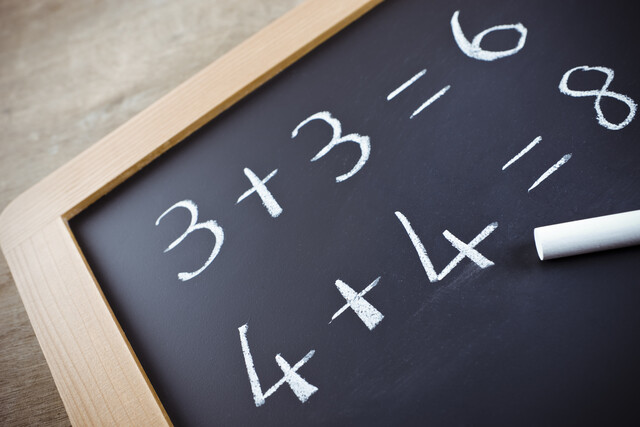Lesson 1. Essentials of Basic Arithmetic
Focusing on basic arithmetic principles like the commutative property and operations with negative numbers, this lesson connects mathematical theory with practical problem-solving. It offers strategies for mastering operations and emphasizes the cognitive benefits of minimizing calculator use, setting a robust foundation for continued study in mathematics.
Lesson 2. Fraction Foundations
Fractions introduce the concept of dividing numbers to represent parts of a whole, classifying them as either proper or improper based on the relationship between the numerator and denominator. Understanding equivalent fractions and reducing them to their lowest terms helps in performing operations like addition and subtraction effortlessly.
Lesson 3. Mastering Fractions: Arithmetic and Beyond
This lesson explores the arithmetic of fractions, covering addition, subtraction, multiplication, and division, even when involving integers and complex fractions. Key strategies include finding common denominators and using reciprocals for simplification.
Lesson 4. Decimals, Percents, and Ratios 101
The lesson introduces decimals, percents, and ratios as essential tools for describing proportions and relationships between numbers. It focuses on improving the ability to convert between these formats seamlessly.
Lesson 5. Exponents: The Stepping Stones to Powers
Exponents reduce repeated multiplication into a concise form and have versatile verbal expressions beneficial for communication in mathematics. The lesson emphasizes following the established order of operations to tackle complex arithmetic expressions correctly.
Lesson 6. Exploring Scientific Notation through Exponents
Building on your foundational knowledge of exponents, this lesson delves into rules for multiplying, dividing, and understanding negative exponents. It also highlights how to apply exponents through scientific notation for simplifying complex decimal values.
Lesson 7. The Power of Roots
In this lesson, we explore the radical symbol, which signifies roots and connects to fractional exponents for an insight into numbers' roots. By mastering radicals, one can evaluate expressions involving roots and apply arithmetic operations efficiently.
Lesson 8. Working with Radical Expressions
Exploring radical arithmetic involves using properties like associativity and distributivity to simplify expressions, ensuring precise results. Learning to add, subtract, multiply, and divide radicals prepares students for handling complex expressions involving irrational numbers.
Lesson 9. Exploring Variables and Simple Equations
This lesson introduces variables and algebraic relations, focusing on the relationship between independent and dependent variables and their roles in forming equations. It provides strategies for evaluating algebraic expressions by substituting values into the independent variable.
Lesson 10. From Equations to Images: An Introduction to Graphing Algebraic Relations
Understanding the real number line and the concept of coordinates allows for accurate graphing of complex algebraic relations. Using horizontal and vertical axes, we can visualize the independent and dependent variables effectively.
Lesson 11. Unlocking the Secrets of Linear Equations
By manipulating equations uniformly on both sides, we model how to solve linear equations and delve into principles that can be extended to more complex equations. Central to the lesson is understanding the relationship maintenance between independent and dependent variables.
Lesson 12. Understanding Basics: Rectangles and Triangles
Students learn to connect algebraic concepts with geometry by calculating perimeters and areas of rectangles and triangles, using mathematical representations and operations. Essential terms related to geometry like points and angles are also detailed for foundational comprehension.
Lesson 13. Circle Geometry: Basics and Beyond
Bridging algebra with geometry, this lesson examines circles by defining circumferential relationships through pi (?) and geometrical terms like radius and diameter. Calculating circle circumference and area shows how mathematical constants interplay in real-world geometric scenarios.
Lesson 14. The Basics of Fairness and Chance
Understanding probability requires defining key terms such as fair and random and distinguishing between selection with or without replacement in successive events. Calculating probabilities involves determining the ratio of successful outcomes in situations like coin flips, dice rolls, or card draws.
Lesson 15. Quantifying the 'Middle': Average, Median, and Mode
Understanding the 'middle' of data sets involves calculating averages, medians, and modes, enabling clearer interpretations although misinterpretation is possible if outlying data skews results.
Very helpful and quick to reply to my emails.
My teacher did a great work.
What I liked most were the tests and assignments. It evaluates my knowledge.
I enjoyed this course. I'm also glad I could get on this course as often as I could. I liked the 5 exercises before the assignments in each chapter, plus the videos helped. The break down of the material was good too. Also I noticed that the assignments and the exercises addressed my working knowledge of my work and the test addressed my verbal knowledge, which is good. I notice that I have some problems with verbal knowledge. This has to do with me and maybe a health problem. I'm glad to know this. It tells me what to work on.

14 Hours average completion time
1.4 CEUs
15 Lessons
44 Exams & Assignments
182 Discussions
16 Videos
170 Reference Files
115 Articles
Mobile Friendly
Last Updated December 2025












